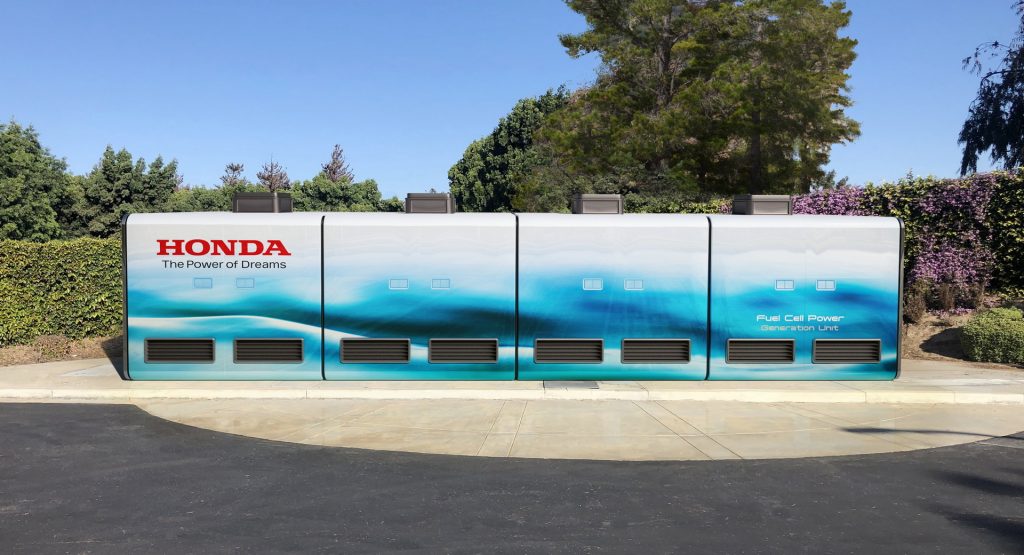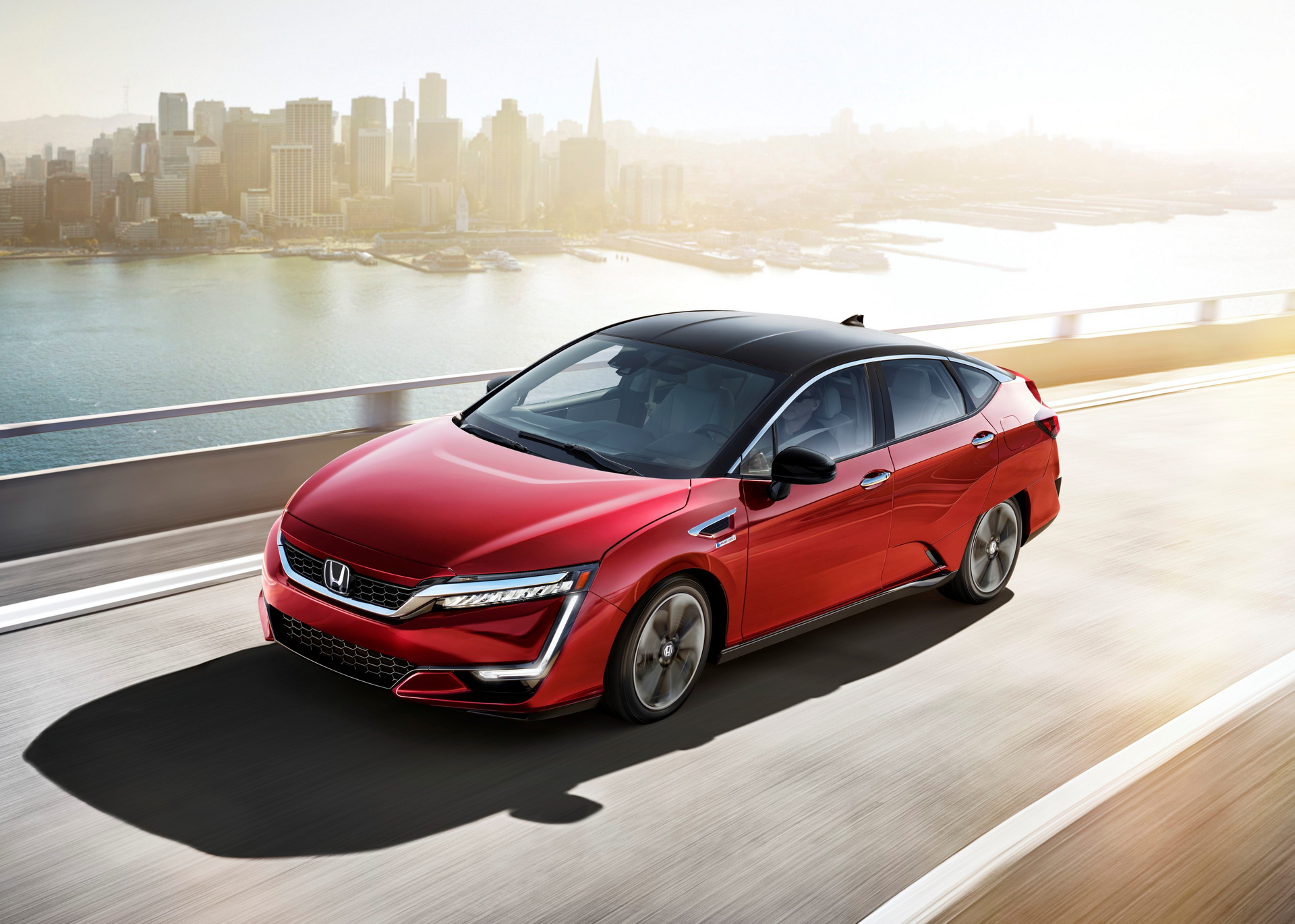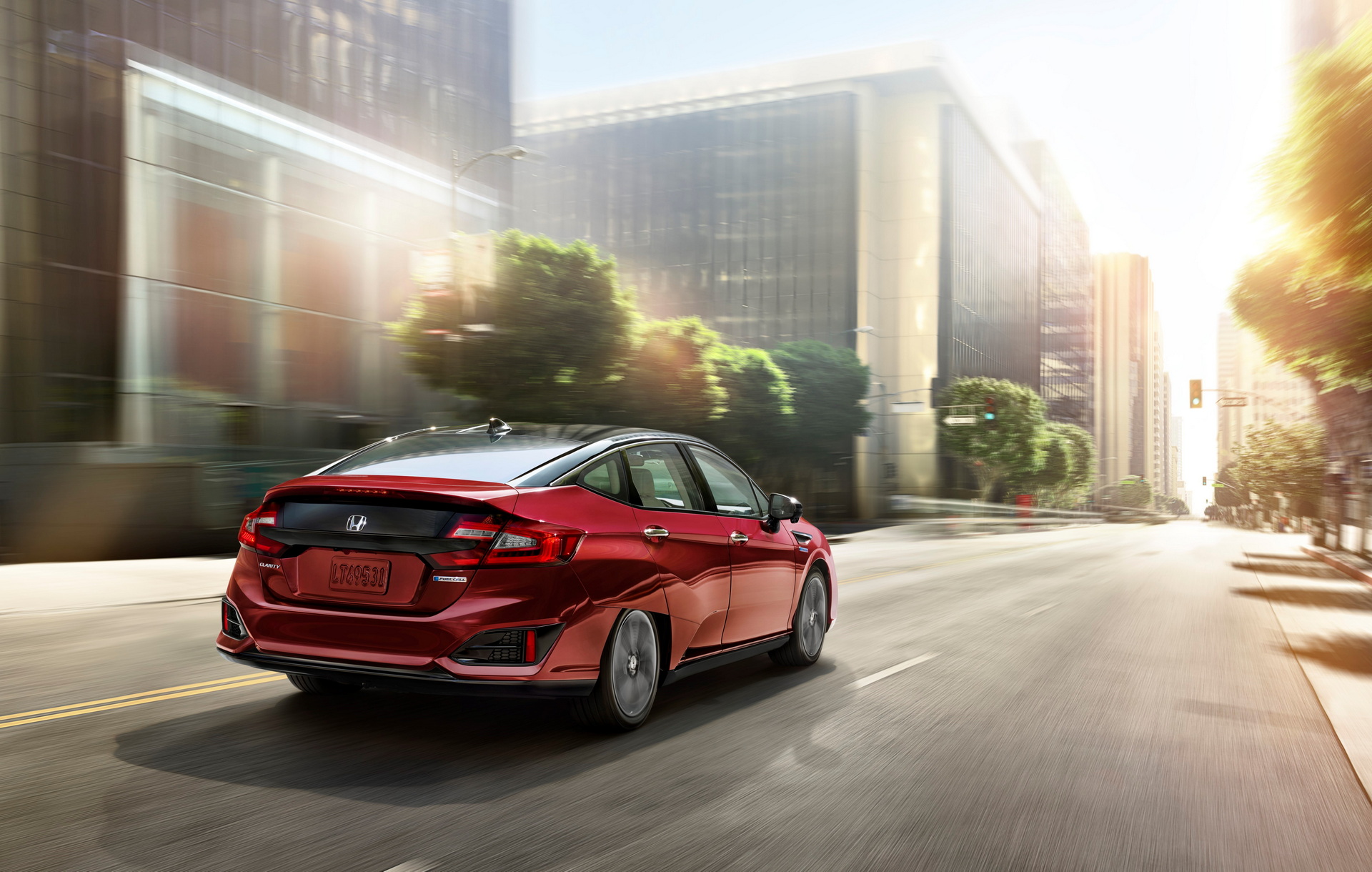Honda announced today that it plans to install a new hydrogen-power generator at its corporate campus in Torrence, California, in 2023. Serving as a proof of concept for the future commercialization of the generator, it will offer zero-emissions backup power to the facility’s data centers.
The new initiative will leverage Honda’s existing knowledge in hydrogen fuel cells that it learned in the production of the Honda Clarity Fuel Cell vehicle. Moreover, it will also use components from the Clarity in a four-quad parallel stationary fuel cell power generation system that’s capable of generating up to 1,152 kW-DC/1MW-AC from an inverter.
The design was chosen because, as the name suggests, it uses four-cell units that can be organized in a number of different orientations. Depending on where a potential future customer wants to install the generator, it can be organized like a big square, like an L, or like a Z.
Read Also: Renault Teases A New Hydrogen-Powered Concept, Will Debut In May
Starting in 2023, Honda will hook its new generator up to its data hub, which must have power at all times regardless of whether or not the grid can provide it. The proof of concept will verify the generator’s performance and will allow Honda to learn about power supply, grid connection access, construction specifications, AC/DC connection, and supply chain.
“We will leverage the expertise Honda has established in creating multiple generations of fuel cell systems for the development of a fuel cell power generation station,” said Mitsuru Kariya, senior vice president in charge of the R&D Business Unit of American Honda. “This project is an opportunity to further utilize our strengths in fuel cell technology to more quickly create, assess and advance a clean power generation system for potential commercial customers.”
Honda says it is still committed to developing fuel cell systems for passenger vehicles but it is also looking towards stationary power generators as well as in the direction of transport trucks and ships to grow the business. Those industries are expected to grow to $86.7 billion annually by 2030.
By opting for a hydrogen generator, instead of its diesel equivalent, businesses with backup power needs can reduce their carbon footprint, especially if the hydrogen is produced using renewable energy.






